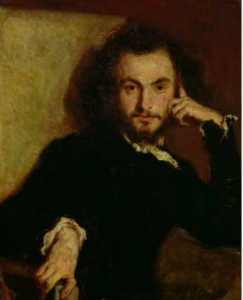Relatively Delightful

"Deux Grisettes et Deux Soldats," by Constantin Guys (circa 1860), demonstrated the necessity of fashion in art, according to Baudelaire.
With the fashion collections just around the corner, it seems an appropriate moment to pay homage to Charles Baudelaire, fashion’s first poet, who recognized that fashion is integral to portraying modern times in art, and who swans his way through Encyclopedia of the Exquisite. “What poet would dare in the depiction of the pleasure caused the the apparition of a beauty, separate the woman from the dress?” he asked in his influential essay Le Peintre de la vie moderne in 1863.
For Baudelaire, beauty was both “something eternal and something transitory,” and poets and artists were charged with the challenge “to distill the eternal from the transitory.” Fashion, because it is constantly becoming something new, was for Baudelaire a hallmark of modernity.
When he was young and flush, Baudelaire lived in a bohemian haze of opium smoke in Paris’ Latin Quarter, where his rooms were done up in red and black stripes. In those days, he might wear a black velvet tunic cinched with a gold belt, skin-tight pants and patent-leather shoes. He wore white shirts open at the neck and a loose scarlet red tie. His extravagant, insistent elegance, soon put him deep into debt.
Ever the great dandy, Baudelaire declared all fashion “delightful—relatively delightful, that is.”


Comments